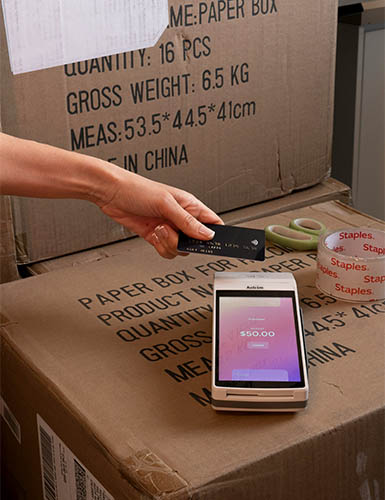Technology is like a moving train, we can’t stop it, all we can do is jump and adapt. The digital landscape is rapidly evolving and businesses have to undergo a digital transformation in order to stay relevant. The internet has been driven by the increasing demand for seamless collaboration and efficient communication among businesses, teams and partners. Working environments are becoming more remote with an increase in employees working from home and the rise of freelancers choosing the digital nomad lifestyle. It is predicted that 32.6 million Americans will work remotely by 2025, leading to more demand for connected systems.
Let’s consider a globally interconnected industry like apparel and fashion. In this industry, effective collaboration and connectivity are crucial for success. Enterprise Resource Planning (ERP) software plays a vital role in managing various aspects of an apparel business, including inventory and backend operations. However, to connect with external partners, ad-hoc tools have been integrated. Notably, platforms like Zoom and Gmail have had a profound impact on communication within teams, partners, and individuals in the apparel industry. Despite the current benefits of ERP and external communication tools, there is potential for further improvement. Can ERP be reimagined and enhanced to surpass its current capabilities and provide an even more seamless and efficient collaboration experience in the apparel industry?
Nowadays with a click of the button like “connect” on Linked in or “share” on Google Docs, you’re instantly connected and are able to share information back and forth easily with your partners. Google Workspace challenged the traditional concept of personal computers and local document storage by integrating various collaboration tools into a unified system, Google Workspace has streamlined communication and collaboration among individuals. The key difference lies in its network-first approach, which prioritizes seamless collaboration and productivity . The idea behind this evolution is to create an ecosystem where work can be done efficiently, fostering collaboration between employees and external partners, and reducing the need for ad hoc tools or constant switching between different applications.
The evolution of system design is now incorporating networking tools, revolutionizing the way information is shared and eliminating the need for external plug-in tools. The goal is to redesign and reimagine personal productivity within the company, considering the impact of global connectivity and the network. This can be referred to as the inside out approach evolving to an outside in approach in system design. Switching the initial focus from internal productivity to adapting the networking tools in the system for more productive internal practices through seamless collaboration.
The ERP can be reimagined through the outside-in approach, switching the focus of the design allowing fashion businesses to efficiently manage their backend business with a focus on enhancing collaboration between partners in the global fashion supply chain. The ERP can be reborn and adapted to the network available in the apparel supply chain, enabling an environment for more seamless collaboration between partners and enhancing the connectivity within the apparel supply chain through the network tools integrated firsthand in the system.
In conclusion, the death of traditional ERP systems is not a goodbye, but rather an invitation to embrace a new era of collaboration and connectivity in the fashion industry. The outside-in digital transformation, exemplified by giants like Google and Meta, has shown us the power of networks and seamless global connectivity. For the apparel industry, where collaboration is the lifeblood of success, it is time to welcome a reborn ERP system designed to enhance communication, data sharing, and collaboration between partners in the global apparel supply chain.






